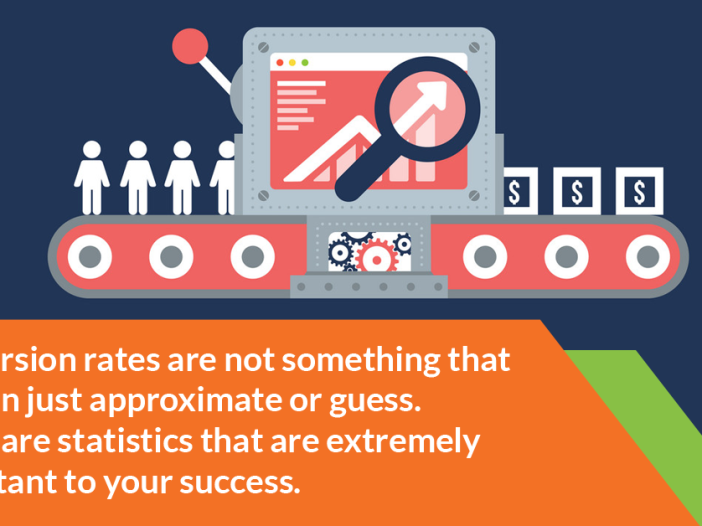
If you are trying to track your conversion rates, you must first understand what your goal is.
Are you asking customers to sign up for your newsletter? Do you want them to create an account on your site? Do you want them to complete a transaction?
Whatever your call to action is, it is extremely important that your website conveys this call to action and relays the message to your target audience. Without a call to action, your conversion rates will be lower than they should be.
Conversion rates are not something that you can just approximate or guess. These are statistics that are extremely important to your success.
If you have discovered that your bounce rate (percentage of people leaving your site after viewing a single page) is high, there are minor changes that you can make to your landing page to increase the likelihood of visitors sticking around long enough to see and respond to your call to action. These changes can be small to start, adjustments to colors, line spacing and images.
However, if you want lasting results, there are some things that you need to know.
What is a Good Conversion Rate?
According to Wordstream.com, the average conversion rate is 2.35%.
What Makes People Stay?
This is different for every company. However, there are some common trends that have been proven to be effective. Depending on your industry and the products and services you offer, there may be opportunities to offer free consultations or trials. Having advertisements for these things on your landing page can be a big incentive for your visitors to look into what you have to offer.
Who is Visiting Your Website?
Are your visitors the ones that will use the product or service? Are they acting as a middleman? Conversion is all about taking the visitors you already have and getting them to respond to the content that you have provided for them. Find out who your audience is and what they are interested in. Adjust your ads.
Information research is the means by which this end is achieved. By collecting your customer’s information research you better understand the consumers who buy your product or service. Not only are you able to create ads that appeal to them with this information, you’re opening another door for your marketing plan.
Aspects To Consider:
- Total Conversion – Your total conversion is the number of people who visited your website and did what was you wanted them to do (sign up for a newsletter, buy something, etc.). To get your conversion rate, you divide that number by the total number of people that visit your website. For example, if your site gets 5000 visitors and 50 of them answered your call to action, your conversion rate is 1%.
- Bounce Rate – This is the percentage of people who leave after viewing a single page. If your bounce rate is high, your visitors are not finding what they need immediately so they are moving on to something else.
- Average Time on Site – This Engagement Metric measures that average amount of time people spend looking at your site. A high bounce rate means that people are not spending enough time on your site to do whatever it is that you are asking of them. This Engagement Metric can reassure you that improvements may need to be made to your site so that people are engaged and are reading your content.
- Exit Rate – This is something that you should do for each page. The exit rate tells you the percentage of people who leave after viewing a specific page. This can alert you to any specific pages that may be turning your customers off from your product or service.
- Average Page Views – This is an Engagement Metric measuring how many pages the average visitor views before they decide to leave your site. This may tell you how easy or difficult it is for the average customer to navigate through your website.
These are just some of the statistics that may help you optimize your conversion rates. You may end up making changes to your landing page 7 or 10 times before you find one that leads to a significant increase in conversions.
With the introduction of new offers or adaptations to your landing page, you may end up not only converting your current leads but generating new ones that will see your call to action and respond to your product or service.
Recommended Reading: The Bounce Rate and Your Untimely Demise
[wp_social_sharing social_options=’facebook,twitter,googleplus,linkedin,pinterest’ facebook_text=’Share on Facebook’ twitter_text=’Share on Twitter’ googleplus_text=’Share on Google+’ linkedin_text=’Share on Linkedin’ icon_order=’f,t,g,l’ show_icons=’0′ before_button_text=” text_position=’l’ social_image=”]
